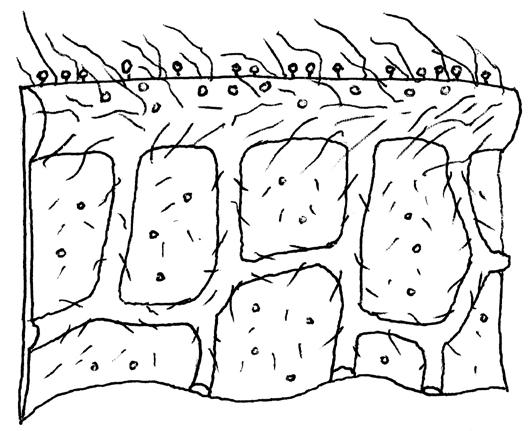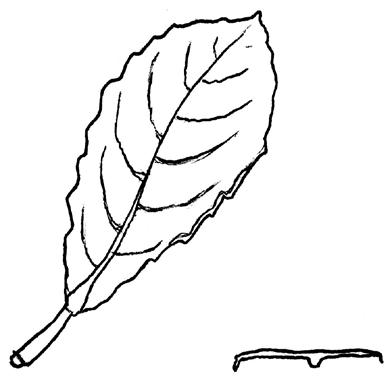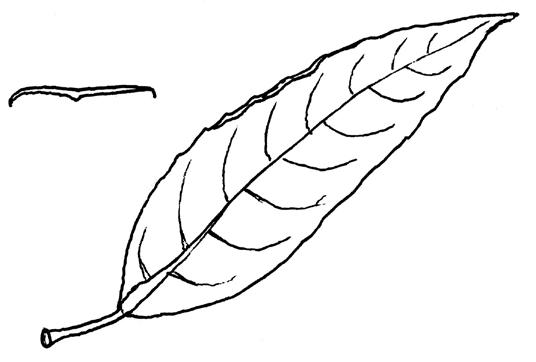
7 minute read
Further common problems with field identification Bob Leaney
Further common problems with field identification
BOB LEANEY
Advertisement
Here are some more identification problems that frequently come up while tetrad recording with the Norfolk Flora Group. I hope, as always, that the issues discussed and illustrated will be helpful when identifying common plant taxa not exhibiting the characters used in standard keys.
Agrimonia eupatoria (Agrimony) vs A. procera (Fragrant Agrimony)
Although the two Agrimony species are quite easily separated when in fruit, in the vegetative state there can be problems. A. procera should of course be pleasantly perfumed when crushed. However, the scent is not strong and not a reliable character to confirm the scarcer species.
The two taxa show very similar habitat preferences, occurring on neutral and basic soils, but A. procera tends to avoid strongly calcareous soils. It should be suspected if one finds robust plants with large leaves showing more sharply pointed tips and serrations.
The usual confirmatory character recommended is the presence or absence of shiny, spherical, sessile glands on the leaf lamina under-surface. These should be present in good numbers in A. procera, but a few may also be present in A. eupatoria. Furthermore, these glands are extremely tiny (only readily seen under a microscope at 20–40×), so that they are easily missed, until one realises just how small they are. A better indumentum character is the density of the long, flexuous eglandular hairs on the leaf under-surface, mainly on the venation and midrib – sparse in A. procera, but quite profuse and dense in A. eupatoria.
The best character for A. procera, however, is the presence of quite dense short-stalked glands on the leaf under-surface midrib, as these are always present in profusion between the long eglandular hairs in A. procera, but absent, or virtually absent, in A. eupatoria. These stalked glands are small, but much easier to see with a ×10 lens than the sessile glands on the under-surface lamina. They are mentioned by Poland & Clement (2020) as occurring on the stems, but are more easily found on the leaves. To see them best the leaf should be turned upside down and the laminae bent downwards so that the midrib undersurface can be viewed in silhouette against the sky.
Hybrids between Salix viminalis (Osier), Salix caprea (Goat Willow) and Salix cinerea (Grey Willow)
Hybrids between these three species of willow are quite frequent but not often recognised. They are in fact quite easy to spot as a group because they share a very similar habit, leaf shape and leaf colour quite unlike any other willows. Once one gets one’s eye in for this characteristic appearance, one begins to see them very frequently on fen, grazing marsh or riversides and also on moist roadsides or track-sides.
The three taxa involved are: S. × smithiana (S. viminalis × caprea) or Broad-leaved Osier; S. × calodendron (S. viminalis × caprea × cinerea) or Holme Willow and S. × holosericea (S. viminalis × cinerea) or Silky-leaved Willow. The triple hybrid S. × calodendron only occurs in the British Isles as female plants and is always in planted situations along paths and tracks. The two other taxa are often seen in similar situations, but also occur in more semi-natural habitats.
All three hybrids are tall, robust shrubs up to c.10m high with numerous erect or spreading branches, non-persistent stipules and dark greygreen lanceolate (to elliptic) leaves. The leaves mostly resemble Salix cinerea at a glance, but are longer and narrower, with more gradually attenuated and acuminate tips and no oblanceolate element to the shape (in other words widest at or below halfway). The leaves of all three taxa have undulate, subentire and ± narrowly recurved margins and are dull darkish-green above and ashy-grey pubescent
AGRIMONIA
Agrimonia eupatoria
• Small, greyish, mid green leaves. • Leaflets blunt-tipped with blunt serrations. • Dense, long, flexuous eglandular hairs and very sparse or absent stalked glands on undersurface of midrib.
Densely hairy leaf venation Very sparse, tiny sessile glands Agrimonia procera
• Large, dark green leaves. • Leaflets sharply pointed with sharp serrations. • Sparse, long, flexuous eglandular hairs and dense stalked glands on under-surface of midrib.

Sparsely hairy leaf venation Frequent, tiny sessile glands


Mid-stem leaves of Agrimony (Agrimonia eupatoria) (left), and Fragrant Agrimony (A. procera) (right), both Norfolk specimens. Note A. procera has larger, darker green leaves, with more pointed leaflets and sharper serrations.
SALIX VIMINALIS / CAPREA / CINEREA HYBRIDS
General features of the hybrids
• Leaves lanceolate to elliptic; tips acute and acuminate. • Margins slightly undulate and subentire. • Ashy-grey pubescent beneath; raised venation.

Raised venation below, with arched main veins Salix cinerea
• Leaves oblanceolate to obovate; tips obtuse to acute (± shortly acuminate). • Margins usually markedly undulate and obscurely serrate. • Under-surface much as in hybrids (sometimes with rusty-red hairs).
upper surface darkish green
Dull, darkish green above Base cuneate to rounded
Salix × holosericea
• Smallest, narrowest leaves (max length c. 11 cm). • Leaf under-surface sparsely hairy (subglabrous late in year).
Usually weak striae

Leaf base cuneate (to cuneate-rounded) Base cuneate
Salix × calodendron
• Largest, broadest leaves (often >12 cm). • Leaf under-surface densely hairy.
Well marked striae
Leaf base more rounded (to cuneate)
Salix × smithiana
• Moderately long, fairly broad leaves (max length c. 12 cm). • Leaf under-surface densely hairy. • First-year twigs soon glabrous and sublustrous.
‘false striae’ each c. 0.5 cm long Leaf primordia with ‘false striae’ (on all three hybrids)

Leaf base cuneate to rounded
beneath, with arched main veins and raised venation. The leaf edge in Salix cinerea is also recurved but usually more markedly undulate.
Once one has decided a willow is one of these viminalis hybrids they should usually be separable using a combination of leaf shape, maximum leaf length and presence or absence of striae on the peeled twigs. S. × holosericea, with the smallerleaved S. cinerea as a parent, has the smallest and proportionately narrowest leaves, with a tendency towards a cuneate shape to the leaf base, and wellmarked striae. S. × calodendron also has well-marked striae, but has the largest leaves, usually with some over 12cm long. These are proportionately quite broad, with a more rounded shape to the leaf base. S. × smithiana also has leaves which are fairly broad, with a cuneate-rounded base, but the twigs lack striae.
When looking at leaf shape and size, it is important to look at the most typical leaves, rather than those found on regrowth, basal branches or on very young trees; try to examine leaves on the branches from as far up the tree as possible. Leaves in the mid-section of the branches are most typical and diagnostic. In assessing leaf shape, pick a few leaves showing the most characteristic shape, but for leaf size select the largest leaves and measure the maximum length of these.
Striae should be looked for on twigs which are 1–1.5cm in diameter, if available, and to find them, carefully strip the bark off from all the way around the twig. What I take to be abortive leaf primordia (tiny, pinhead-sized pegs) have very short, raised ridges on either side of them, which should not be mistaken for striae. These ‘false striae’ (see illustration) occur in S. caprea, S. cinerea and all three hybrids, and are generally less than 0.5cm long. True striae will have no pinhead-sized peg and are usually around 2–3cm long.
With practice, most examples of these hybrid willows can be identified in the field using the above characters, as shown in the illustrations. To begin with, or with more challenging examples, one should take a representative branch, along with several of the largest leaves which can be found, having first checked for striae. I find that the best way to make a reliable determination in willows is to use the Stace key (Stace, 2019) and then check the provisional identification against the drawings and descriptions in the BSBI Handbook (Meikle, 1984); but with these hybrids one should not expect to make a definite identification in all cases. Meikle found that even the most careful of examinations left him with a ‘residue of specimens that refused to conform’ to the diagnostic criteria.
References
Meikle, R.D. 1984. Willows and Poplars of Great Britain and
Ireland. BSBI Handbook No. 4. Botanical Society of the
British Isles, London. Poland, J. & Clement, E.J. 2020. The Vegetative Key to the British
Flora (2nd edn). John Poland, Southampton. Stace, C.A. 2019. New Flora of the British Isles (4th edn).
C & M Floristics, Middlewood Green, Suffolk.
Bob Leaney
122 Norwich Road, Wroxham, Norwich NR12 8SA
Leaves of Salix × holosericea (left) and S. × smithiana (right). Mike Crewe









